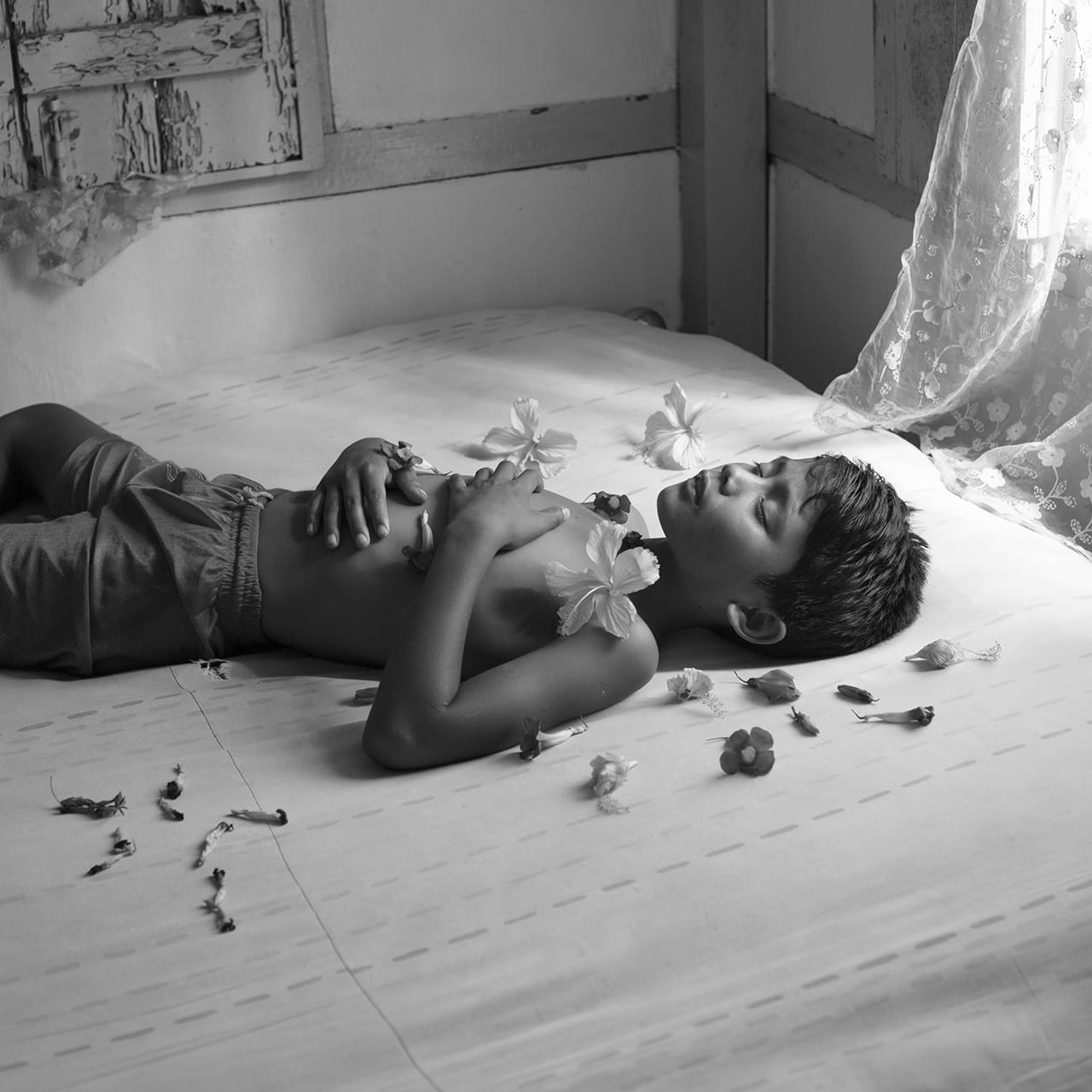
New Talent

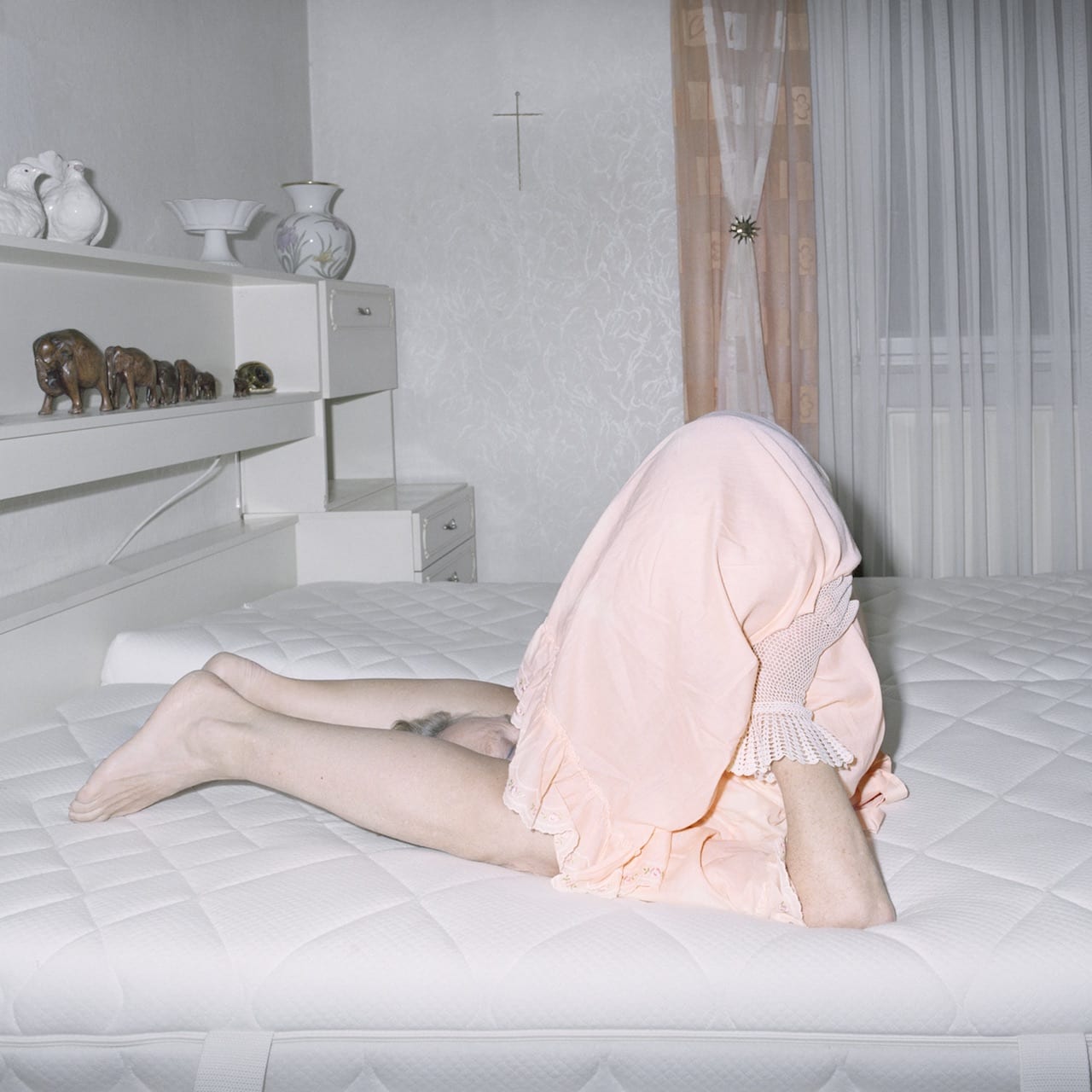
After losing both grandparents in the space of a year, Nina Röder and her family were faced with the challenging task of sorting out and selling their house – and with it, the inescapable matter of letting go. Röder’s project, Wenn du gehen musst willst du doch auch bleiben, takes its name from a sage observation made by her nine-year-old nephew, Luis, while they were packing up the belongings. Roughly translated, it means: ‘When you have to leave but you still want to stay’.
The unresolvable question of how to grieve is one that follows every death. For many, the photographic act can be a way of thinking through and processing difficult times. During the two-week period before her grandparents’ house was sold, Röder photographed her family in it – sometimes posing in their clothes and with their belongings – archiving its distinct aesthetic before it disappeared forever. “I wanted to show a different way of dealing with grief and loss,” she explains. “By staging absurd scenes with my mum, cousin and brother, we found a strategy of how to say goodbye.”
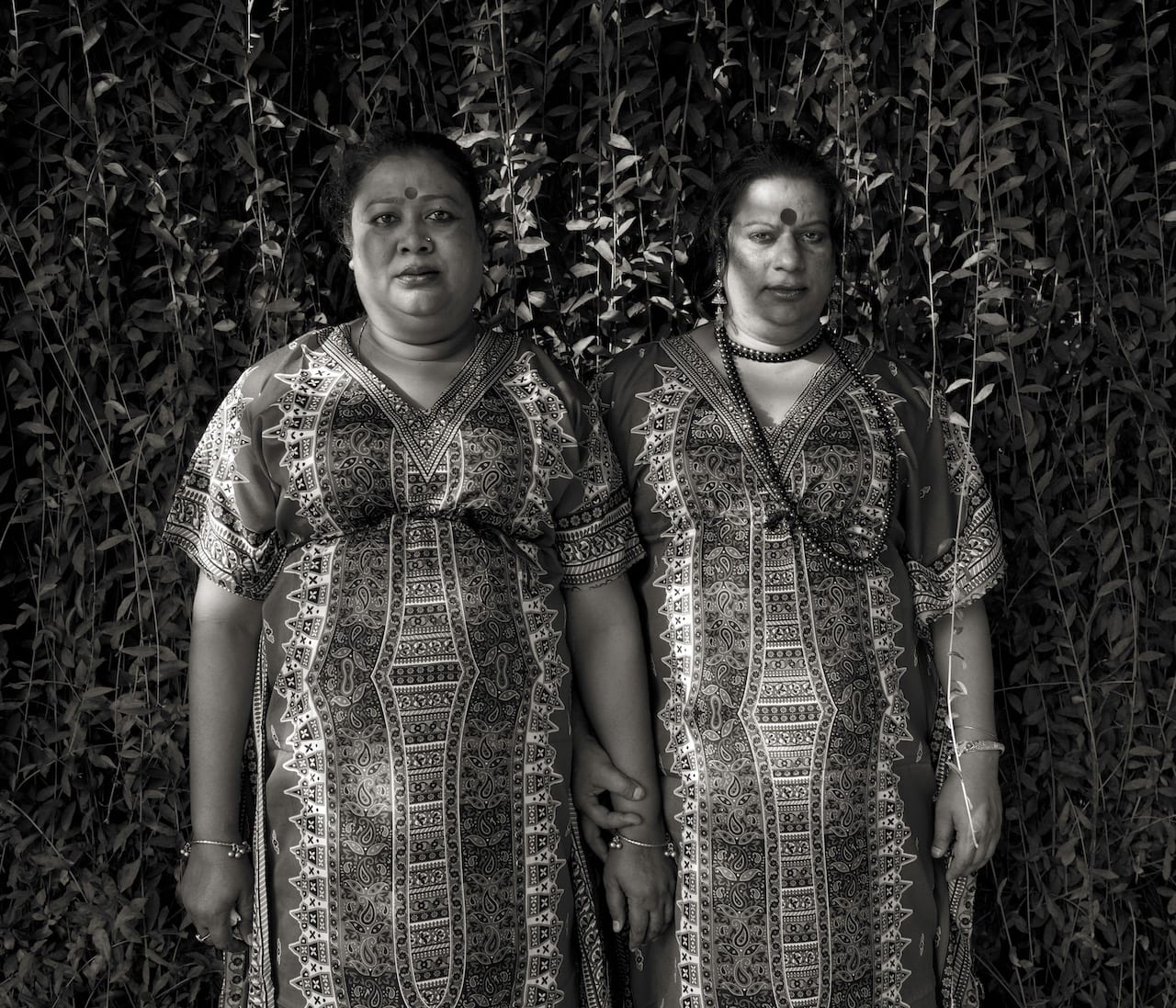
The World Press Photo Foundation has announced the six talents from Asia in its ongoing 6×6 Global Talent Program. Aimed at picking out under-recognised visual story-tellers from around the world, the 6×6 programme is now on its sixth and final region in its first cycle. The photographers picked out this time are: Amira Al-Sharif, Yemen; Azin Anvar Haghighi, Iran; Saumya Khandelwal, India; Senthil Kumaran Rajendran, India; Shahria Sharmin, Bangladesh; and Yan Cong, China.
The image-makers were recommended by an international group of over 100 nominators, and selected by a jury comprised of: Ammar Abd Rabbo (Syria), photographer and journalist; NayanTara Gurung Kakshapati (Nepal), photographer and curator; Claudia Hinterseer (Netherlands), senior video producer South China Morning Post; and Kazuma Obara (Japan), photographer.
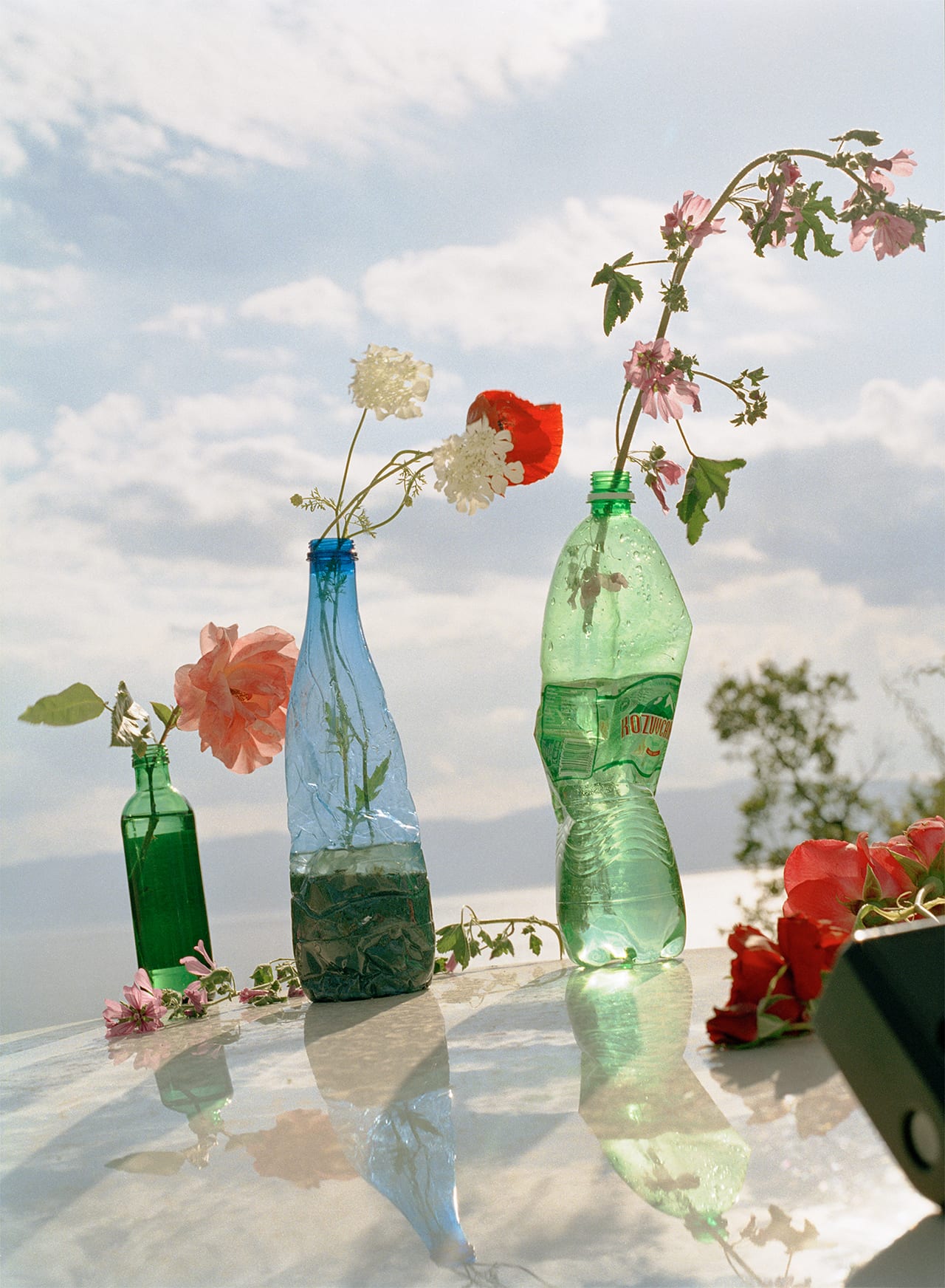
In 1989, a record number of 71,000 Soviet Jews were granted exodus from the USSR after a century of radical changes, fuelled by a wave of anti-semitism. Between 1988 and 2010 over 1.6 million Jews left the territory of the former Soviet Union, most of them settling in Israel but others heading for Germany, Canada, Australia, and the United States.
Irina Rozovsky was seven years old when her family fled from Russia to America in 1988. “It’s ironic in retrospect,” she says. “The USSR was a closed up place where Jews were discriminated against; in the end we were the ones that got to leave and seek out a better life. It was like winning the lottery.”
Rozovsky, now 37, lives in Georgia, US, with her husband and two-year-old daughter. “In my work I’m always circling back to the beginning of things, which for me is leaving one place and settling in another, adapting to a new life,” she says. “My photographs are not autobiographical, but I guess that history and the search for the familiar echoes in how I see. Not being able to see the place that you remember, I think that drives my photography.”
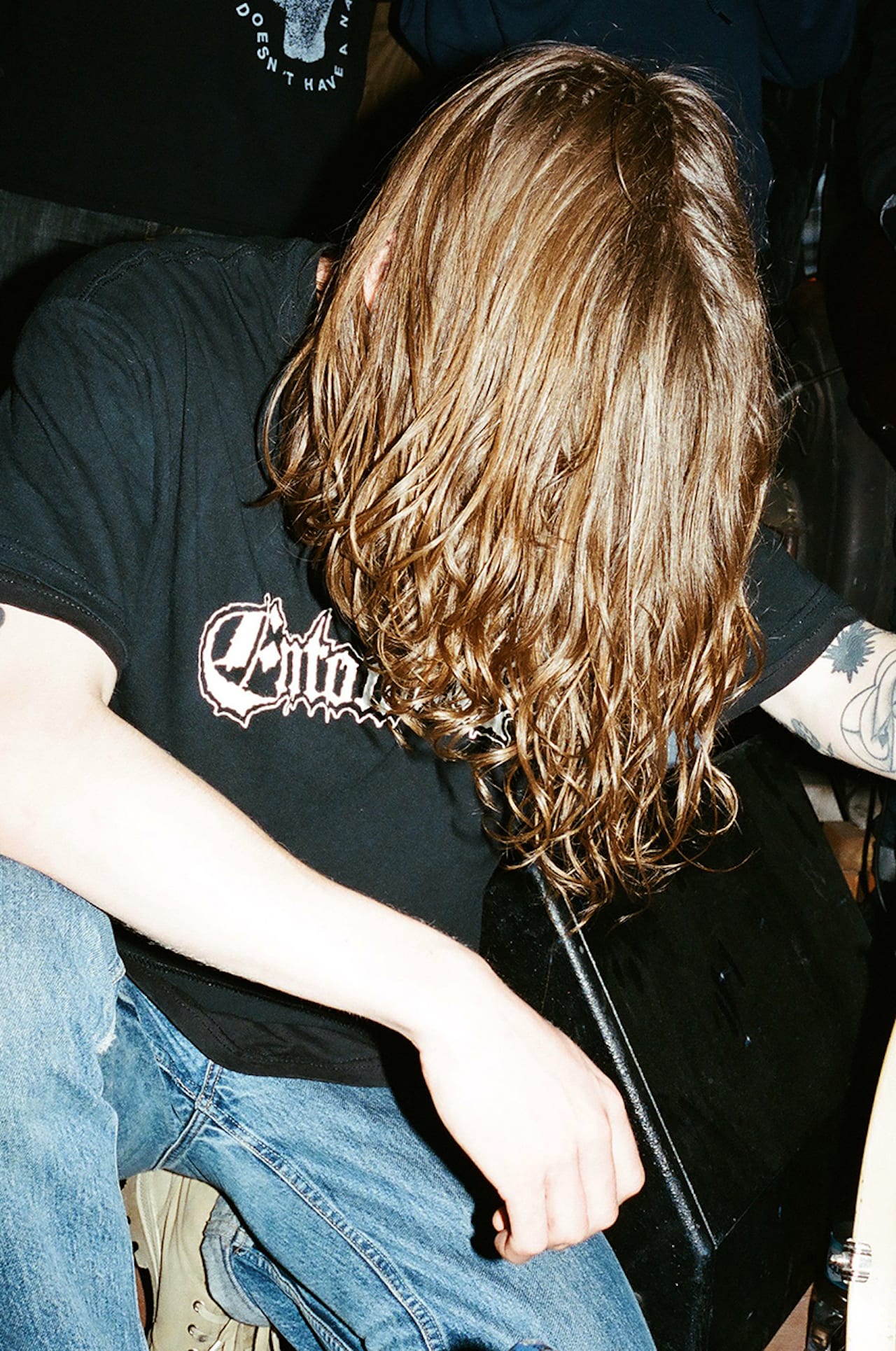
“The Soviet Union left a great heritage in various manifestations from architecture to people’s thoughts, and some are struggling to understand the new times,” says 22-year-old Ukranian photographer Vladyslav Andrievsky. “Often, because of this, the youth is struggling to find common ground with the elders.
“It’s obvious that there were many limitations when it came to one’s life or freedom. Today, when thinking about the Soviet Union, we are visualising it the way it could have been, not the way it was. Of course the fact that somebody could have been killed for a painting or a thought is shocking and devastating. Still, we are left with an enormous cultural heritage like art, literature, music, films, and we truly value that.
“Owing to people like Boris Mikhailov we can try to understand what life was like back then,” he continues. “In his book Case History he is showing homeless people like heroes, who are giving their lives for the brighter future of the new generations. As a young person I don’t want to be a let-down. I don’t want to upset Boris.”
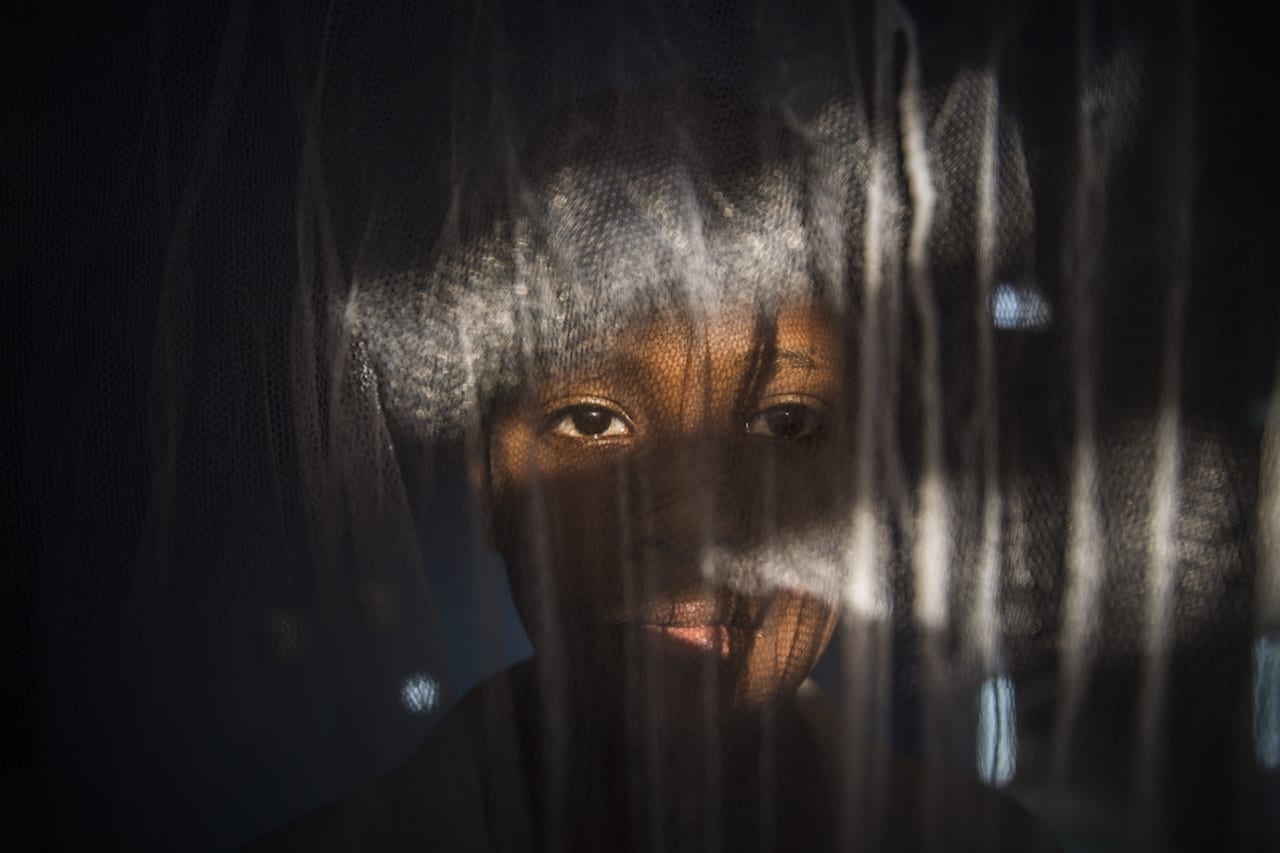
The World Press Photo Foundation has announced the six talents from North and Central America in its ongoing 6×6 Global Talent Program. Aimed at picking out under-recognised visual story-tellers from around the world, the 6×6 programme is now on its fifth region, out of the six identified around the world. This time, the talents picked out were: Dylan Hausthor, USA; Ian Willms, Canada; Mariceu Erthal García, Mexico; Nydia Blas, USA; Tomas Ayuso, Honduras; and Yael Esteban Martínez Velázquez, Mexico.
Each talent has been picked out for two stories: Hausthor, for example, submitting a project called Past The Pond, Setting Fires, about arson in small-town America; and Wood Grain Lick, a documentary and fictional look at life on the edges. Willms’ projects are As long as the sun shines, a story about oil sands extraction in northern Alberta, Canada, and its effect on the local community; and We shall see, about the death of his biker father. Mariceu Erthal García’s projects are Iriana, shot on a holiday in Cuba; and Letters to Gemma, about a young Mexican woman who disappeared seven years ago.
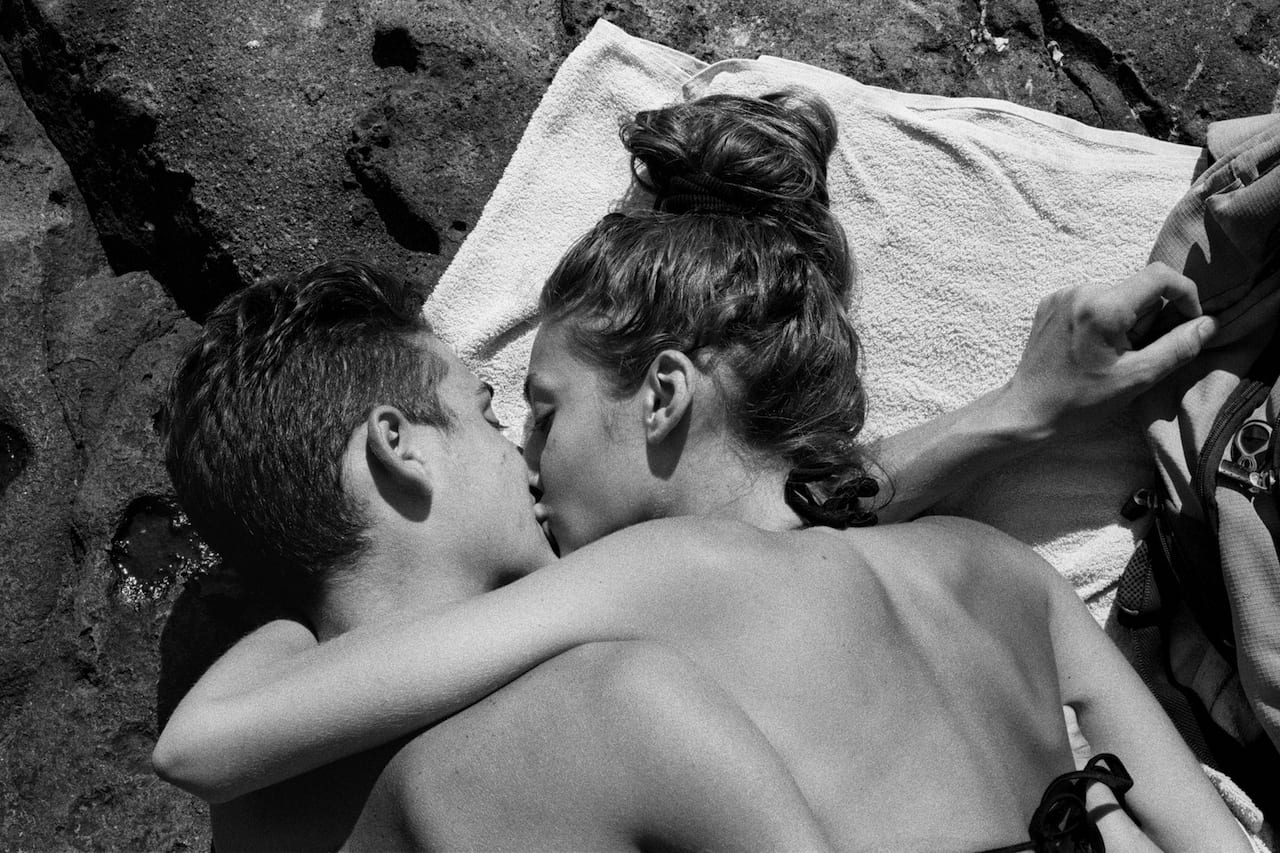
As a medical student specialising in youth and cognitive neuroscience, Claudio Majorana is not a typical documentary photographer. Having grown up with a mother in fine arts and a father in medicine, his attraction to the symbiosis between art and science was initiated at a young age, and his interest in photography – an artistic medium rooted in scientific process – came to him naturally. “Throughout my childhood, I spent tiSme painting in my mother’s atelier, or helping my father develop X-rays in his radiology darkroom. That’s where my interest in images began,” he reflects.
When Majorana was accepted into medical school at 19, he also began photographing voraciously. In the summer of 2011, he encountered a group of kids in the suburbs of Catania, his hometown in Sicily, and began documenting moments in their daily life, rooted in skateboarding culture and the general struggles and raucous habits that colour adolescent life. The result is his series, Head of the Lion.
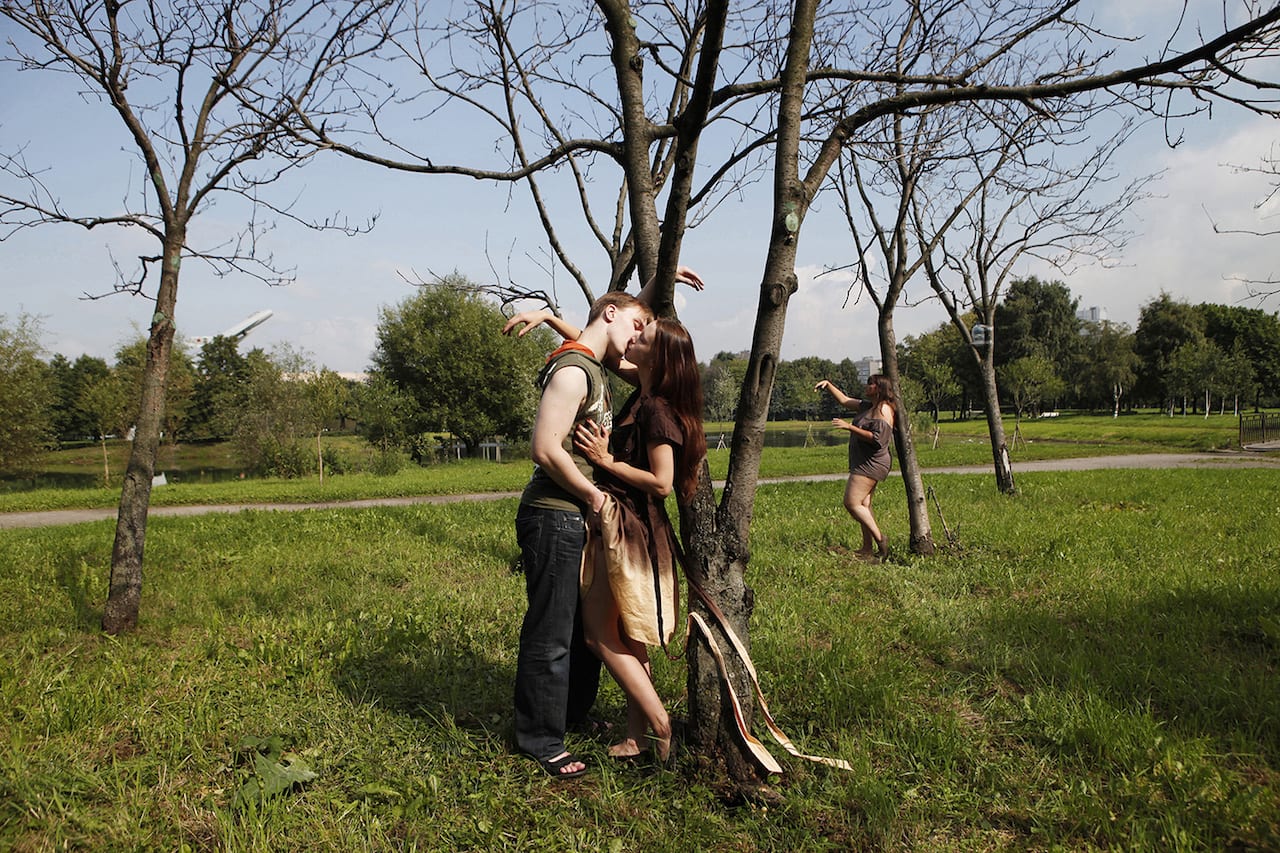
“The way the international audience perceives Russian photography is often based on ‘exoticism’, that builds a pernicious stereotyping around Russian art,” say the makers of Attention Hub. “We show the artists who speak an intercultural and international language, pushing imaginary boundaries.”
Put together by FotoDepartament, the respected St Petersburg gallery, publisher, and arts centre, Attention Hub’s premise is simple – to harness the international reach of the internet to promote a hand-picked selection of emerging Russian photographers. Prints of the photographers’ work can be bought online for as little as €220, with half the price going to the photographer; the rest of the money will go towards building a programme of international events and initiatives to promote their work.
“Online is a dynamic and accessible format, providing the maximum audience coverage from anywhere in the world,” runs the site’s introductory text. “The combination of technology, digitalisation of information consumption, and trends of selling art online all build new ways of overcoming physical boundaries and setting up the convenient and focused support that independent art needs.”
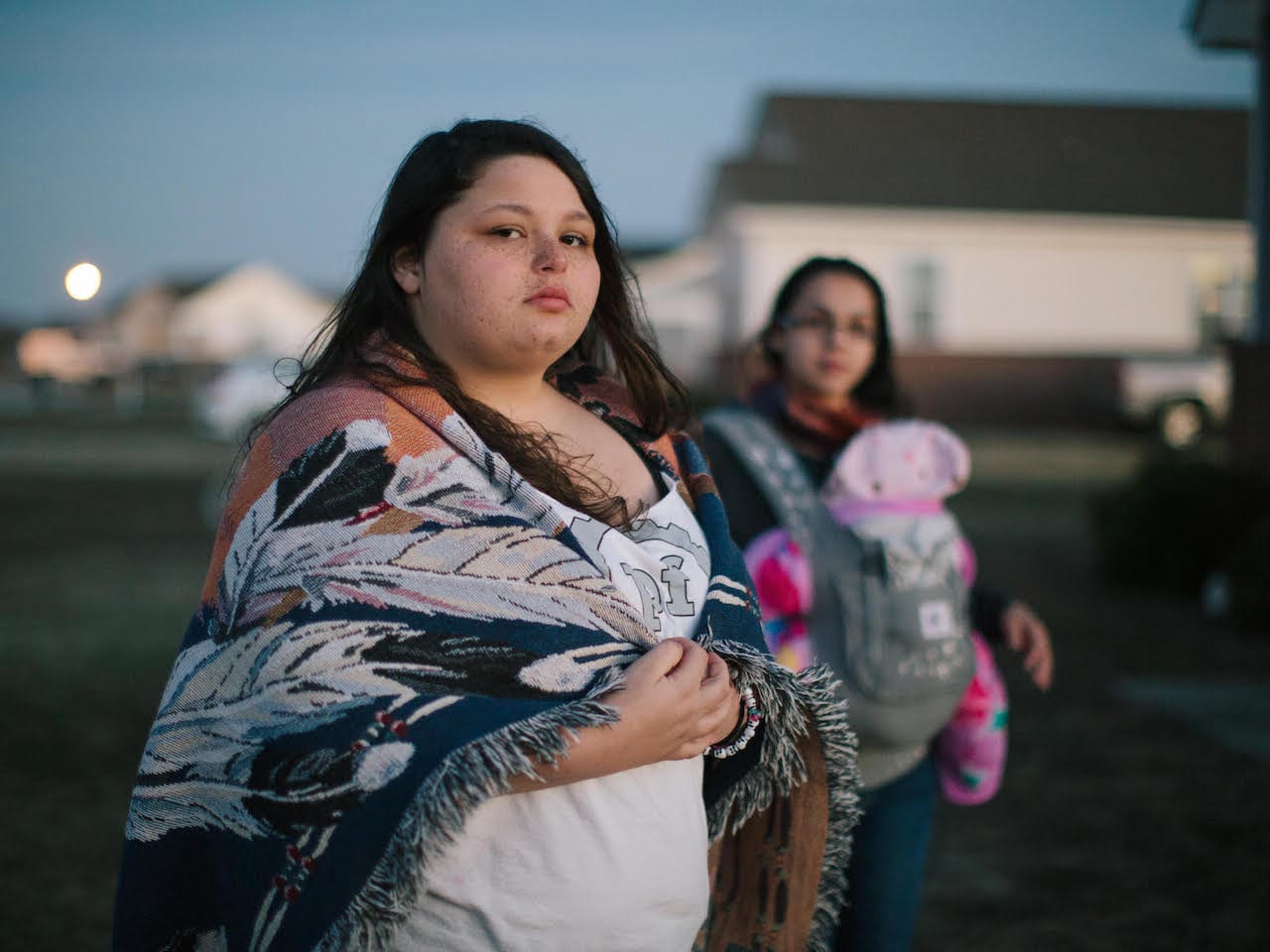
“It’s a bit hard to find words for this – You don’t look Native to me won the PHmuseum Women Photographers Grant,” says Maria Sturm. “I feel exponentially happy and glad to be sharing the list with other women photographers whose work I admire.”
Sturm has won the prize in a strong year for the PHmuseum Women Photographers Grant, with the 31 shortlisted photographers including Magnum Photos’ Diana Markosian, Sputnik Photos’ Karolina Gembara, and Taylor Wessing Photographic Portrait Prize-winner Alice Mann. But her long-term project You don’t look Native to me, which shows young Native Americans in Pembroke, North Carolina impressed the judges with its sensitive approach to its subjects.
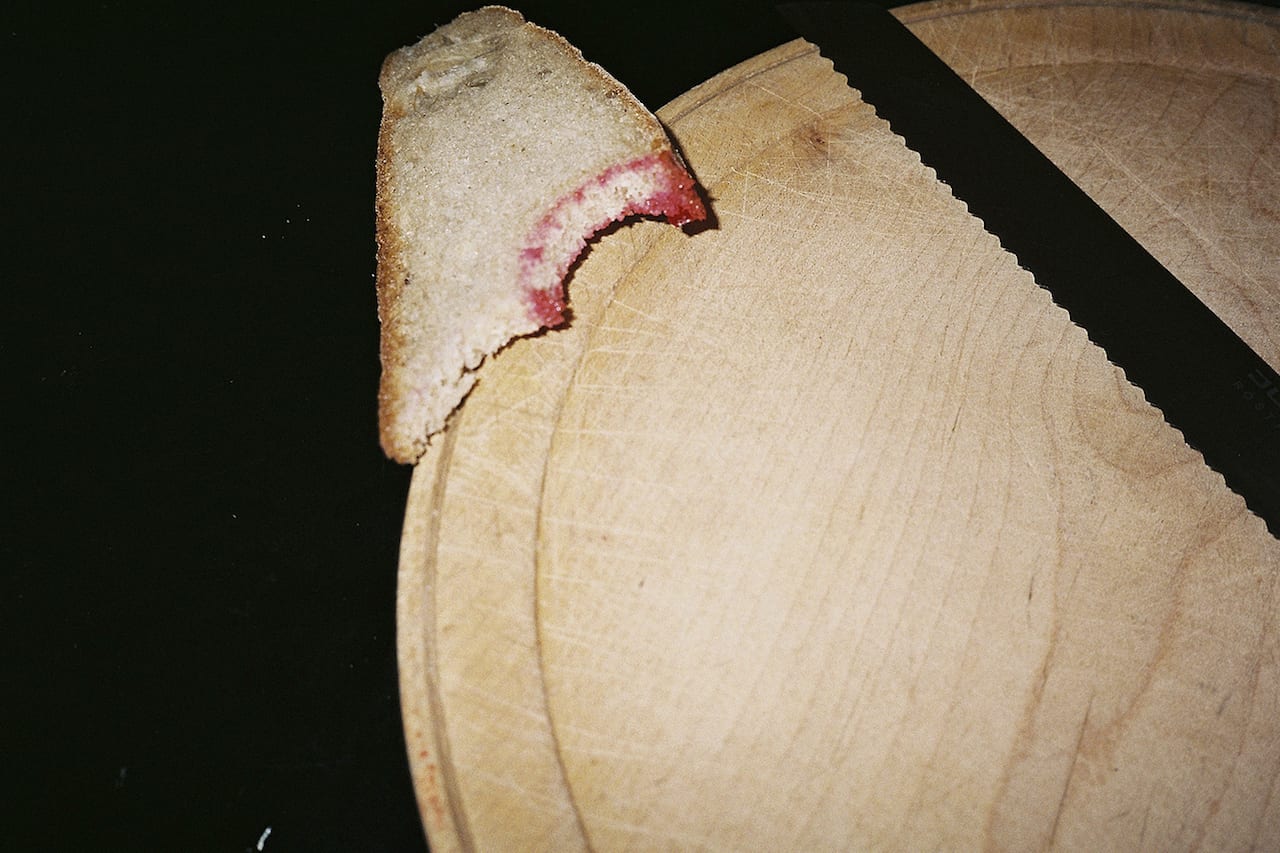
“What lies behind this project is my particular, unique attachment to Slovenia,” writes Klavdij Sluban, a French photographer of Slovenian origin and curator of If Slovenia Were. “It is an exceptional project in as much as it was born out of the desire to share a stretch of a photographic journey with a group of young Slovenian photographers, quite apart from any institutional, educational or other structures.”
Stemming from a desire to keep in touch with the country of his roots, Sluban began the project with an open call, selecting 18 young Slovenian photographers to take part. Each responded freely to the theme, and have been working on their projects for the past three years, developing them in meetings with Sluban on his occasional visits to the country. The resulting projects include series on expatriates who have emigrated elsewhere, photographers’ personal interpretations of Slovenian family life, and introspective series dealing with the artists’ private experiences.
